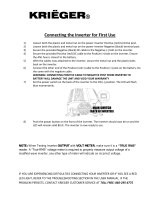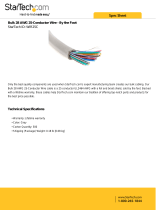
Installation
2–2 975-0209-01-01
Choosing a Location
Inverters are sophisticated electronic devices and should be treated accordingly.
When selecting the operating environment for the inverter, don’t think of it in the
same terms as other equipment that works with it, such as batteries, diesel
generators, motor generators, washing machines, and so on. It is a highly complex
microprocessor-controlled device, similar in nature to stereo equipment,
television sets, or computers. The use of conformal-coated circuit boards, plated
copper bus bars, powder-coated metal components, and stainless steel fasteners
improves tolerance to hostile environments. However, in a condensing
environment (one in which humidity and/or temperature change causes water to
form on components) all the ingredients for electrolysis are present: water,
electricity and metals. In a condensing environment the life expectancy of the
inverter is indeterminate and the warranty is voided.
The inverter/charger should only be installed in a location that meets the
following requirements:
CAUTION
Install the inverter in a dry, protected location away from sources of high temperature and
moisture. Exposure to salt water is particularly destructive and potentially hazardous.
Ventilated Do not operate the inverter/charger in a closed-in area or restrict
ventilation in any way. The inverter/charger requires air circulation
to maintain optimum operating temperature and provide best
performance. If the unit has inadequate ventilation, it may shut down
due to overheating.
The air vented through the openings should also have a path to
circulate away from the inverter/charger.
Dry Do not allow water or other fluids to drip or splash on the inverter.
Do not expose to rain, snow or water.
Cool Normal air temperature should be between 32 °F and 122 °F
(0 °C and 50 °C)—the cooler the better within this range.
Clearance Allow as much space around the inverter/charger as possible.
Xantrex recommends that other objects and surfaces be at least
3 inches (76 mm) away from the ventilation openings for best
performance.
Safe Locate the inverter/charger away from battery in a separate well
ventilated compartment. Do not install the inverter/charger in any
compartment containing flammable gases or liquids like gasoline.
Close to
battery
compartment
The length and size of your DC cables will affect performance. Use
the DC cables recommended in Table 2-2 on page 2–12. The unit
should not be installed in the battery compartment due to the
possible presence of explosive hydrogen gas from the batteries.



































